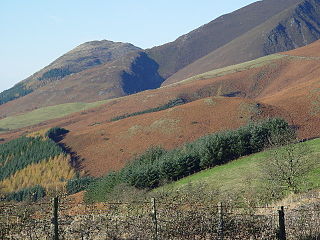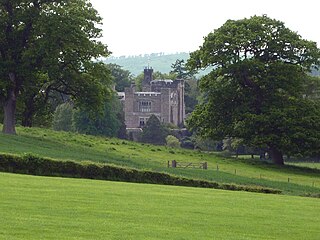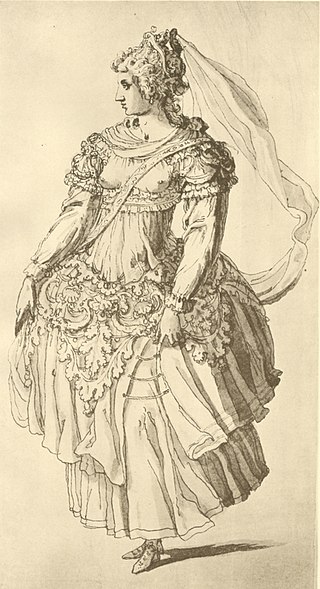Thomas Thurland was Master of the Savoy Hospital in London and a mining entrepreneur. His family was from Nottinghamshire.
Contents

Thomas Thurland was Master of the Savoy Hospital in London and a mining entrepreneur. His family was from Nottinghamshire.

In 1564 Elizabeth I granted Thurland and Sebastian Spydell, [1] and then Thurland and a German partner Daniel Hochstetter a patent to mine and refine gold, copper, silver, and mercury (quicksilver), in England and Wales. Hochstetter was an associate of an Augsburg partnership, David Haug and Hans Langnauer. [2] [3] They were allowed 24 partners or investors. This arrangement was dissolved in 1577. [4]
The copper mines at Keswick were at first a success. [5] The mines were located at Newlands in the parish of Crosthwaite in Allerdale. [6] Thurland, known as the Provost of the Mines, wrote to William Cecil, a shareholder, [7] about the successes, sending plans of the works and smelting house, [8] and mentioning that Daniel Hechstetter had to buy more timber to prop up the workings at Newlands because the seam was so large. Some of the timber was brought from Ireland. [9]
In October 1566, Thurland was approached at Keswick by a Dutch prospector Cornelius de Vos who brought a sample of gold ore from Scotland. Cornelius was a shareholder in the Company of Mines Royal, [10] but Thurland was not pleased by this development and reported the find to the Company of Mines Royal. [11] Thurland wrote to Queen Elizabeth in alarmist terms about "secret practices with merchant strangers and by some foreign princes to have of the Scottish queen (Mary, Queen of Scots) the mines in Crawford Moor nigh adjoining to your majesty's west borders", mines he hoped to work himself. [12]
Stephen Atkinson, who later wrote about gold mines in Scotland, claimed to have worked with Thurland's partner Daniel Hochstetter. Atkinson said that Hochstetter had told him of injuries suffered by George Bowes (or his brother Robert Bowes) in an accident in a Cumbrian copper mine. [13]
The Earl of Northumberland disputed their right to the copper and sent men to occupy the works in October 1569. Arguments were made that copper, a base metal, was not usually reserved to the crown. [14] The courts decided that the monarch possessed the mineral rights and Thurland and Hechstetter's patent was valid. [15]
Despite Thurland's upbeat reports, the venture proved financially unsuccessful, due to high costs and low copper prices. The German and English workers quarrelled. Thurland's ideas of discipline did not create respect. One German mine manager, Hans Loner, wrote that Daniel Hochstetter had insisted on using older methods and technology. [16]
Thurland was dismissed from the Savoy Hospital in 1570 for misappropriating funds and property to pay his personal debts. [17]
Mining work in the Newlands and Keswick continued, managed by a local landowner Richard Dudley of Yanwath, [18] and from 1581 some technological impovements were trialled by Joachim Gans from Prague. He used methods outlined by Lazarus Ercker. [19]

Keswick is a market town and civil parish in the Allerdale Borough in Cumbria, England. Historically, until 1974, it was part of Cumberland. It lies within the Lake District National Park, Keswick is just north of Derwentwater and is four miles from Bassenthwaite Lake. It had a population of 5,243 at the 2011 census.
William Humfrey (c.1515–1579) was an English goldsmith, mining promoter, and Assay Master at the Royal Mint during the reign of Elizabeth I.
Joachim Gans was a Bohemian mining expert, renowned for being the first Jew in North America.

The Case of Mines or R v Earl of Northumberland was decided in 1568.
The Society of the Mines Royal was one of two English mining monopoly companies incorporated by royal charter in 1568, the other being the Company of Mineral and Battery Works.
The family of Höchstetter, from Höchstädt in western Bavaria near the banks of the Danube, were members of the fifteenth and sixteenth-century mercantile patriciate of Augsburg.

Sir George Bruce of Carnock was a Scottish merchant, ship-owner, and mining engineer.

Underskiddaw is a civil parish in the Borough of Allerdale in the English county of Cumbria. The parish lies immediately to the north of the town of Keswick, and includes the southern and eastern flanks of Skiddaw as well as part of the valley of the rivers Greta and Derwent, and a small part of Bassenthwaite Lake. The parish includes the settlements of Applethwaite, Millbeck and Ormathwaite, all of which lie along the line where the southern slopes of Skiddaw meet the valley.
Stephen Atkinson, English metallurgist and author of The Discoverie and Historie of Gold Mynes in Scotland.

Thurland Castle is a country house in Lancashire, England which has been converted into apartments. Surrounded by a moat, and located in parkland, it was originally a defensive structure, one of a number of castles in the Lune Valley. It is recorded in the National Heritage List for England as a designated Grade II* listed building. Situated between the villages of Cantsfield and Tunstall the castle stands on a low mound on a flat plain, with the River Greta on the south side and the Cant beck to the north. A deep circular moat surrounds it.
The German mines at Caldbeck were part of the operations of the Company of Mines Royal in Caldbeck, which introduced German miners from modern day Austria and Bavaria into the Lake District in 1563, though earlier works in the area are thought to have been begun in the 1300s. The importance of the operation lies in its historical significance as the first large-scale copper mining and smelting operation in the British Islands which was well-documented. New smelting techniques were introduced which were allowed the treatment of argentiferous copper sulphide ores and the more complex lead-copper-silver ores from Caldbeck.

Sir David Hechstetter was a director of the Company of Merchant Adventurers of London and a land-owner in Hertfordshire and Middlesex. He was a justice of the peace for Middlesex and was knighted in 1714.

Cornelius de Vos or de Vois or Devosse, was a Dutch or Flemish mine entrepreneur and mineral prospector working in England and Scotland. He was said to have been a "picture-maker" or portrait artist. De Vos is known for gold mining in Scotland and founding saltworks at Newhaven near Edinburgh.
George Bowes was an English prospector. He mined for gold in Scotland.
Eustachius Roche was a Flemish mining entrepreneur in Scotland.
George More was an English supporter of Mary, Queen of Scots, and a participant in the Throckmorton Plot. A Catholic exiled in the Spanish Netherlands, he visited the royal court of Scotland in 1598.

Hilderston or Hilderstone in West Lothian, Scotland, was the site of the discovery of a vein of silver in 1606 and a mining operation that attracted international interest. King James used rumours of a silver bonanza to leverage a loan in the City of London. He took over the mine works, an act sometimes regarded as an example of nationalization. The enterprise may have inspired a satirical stage play. On 8 May 1608 work commenced under royal supervision. Miners from Cornwall and Germany were employed in the works. 55.9259°N 3.6166°W
Gold has been mined in Scotland for centuries. There was a short-lived gold rush in 1852 at Auchtermuchty and Kinnesswood, and another in 1869 at Kildonan in Sutherland. There have been several attempts to run commercial mines. In the Lowther Hills, Leadhills, and Wanlockhead areas gold prospecting and the extraction of lead metal went hand in hand. From 1424, under the Royal Mines Act, until 1592, gold and silver mined in Scotland were deemed to belong to the crown.

Nicholas Williamson was an English lawyer and Catholic recusant in the 1590s. He was arrested in 1595 after planning a visit to the court of James VI of Scotland. The Jesuit William Crichton had hoped that Williamson would encourage the ambition of James VI for the throne of England.

Oes or owes were metallic "O" shaped rings or eyelets sewn on to clothes and furnishing textiles for decorative effect in England and at the Elizabethan and Jacobean court. They were smaller than modern sequins.